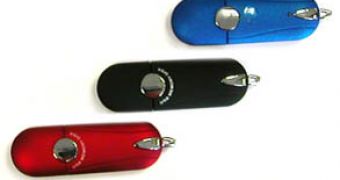Flash memory is found nowadays in a lot of electronic consumer devices like cell phones and memory sticks, but the flash memory could advance even further according to a company called Nanochip. This small company recently received VC funds from Intel, according to the news site News.com and they say that by 2010 a new device will become available that will be able to store eight times more data than a traditional flash chip. Another good point in favor of the new technology is that the total price per gigabyte will be two or four times smaller, as the Nanochip chief executive officer Gordon Knight said.
A number of companies are already interested in technologies that could replace the flash memory and some solutions like "phase change memory, spintronics and silicon nanocrystals" have already been proposed, but until now none of them gained wide acceptance among manufacturers. The phase change memory technology gained the widest acceptance, but it is difficult to implement it in day-to-day devices, as it is based on the heating of "microscopic points on a CD-like media to record data". The CEO of the Nanochip company admitted that they worked for a time with this technology that was discarded about a year ago, when they switched their attention to a new kind of chip.
Nanochip's new product is not really a chip in the classical way, as it is composed of three separate chips with a bottom layer of silicon on which tiny actuators are created. Their role is to record data on an overhead media layer. The whole assembly is then capped with another chip. This technology seems to be very similar to IBM's Millipede prototypes that were abandoned, due to technical difficulties as tiny actuators were used to heat up point on the media layer. The main difference between the IBM and the Nanochip approaches is that the latter does not use heat to store data but rather electronics, meaning "data recording will be more accurate and the chip will last longer".
"We can use fully depreciated manufacturing lines," Gordon Knight said. "There is nothing high resolution about making these chips." He "provided these details during a presentation here at the AlwaysOn Stanford Summit and in a meeting" according to News.com.

 14 DAY TRIAL //
14 DAY TRIAL //